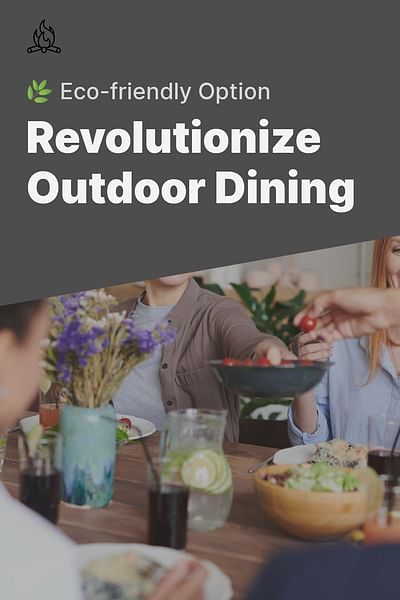Jeanie is a certified nutritionist with a passion for nature and outdoor adventures. She merges her knowledge of healthful eating with her love for camping to provide practical advice on staying nourished and energized in the wilderness. Her mission is to guide people towards making healthier food choices while they take pleasure in exploring the outdoors.
As a vegan chef and outdoor enthusiast, I believe in the importance of sustainable and eco-friendly practices, even when it comes to outdoor dining. When it comes to the question of whether restaurants should use paper plates for outdoor dining, there are a few factors to consider. This includes understanding the importance of eco-friendly camping food and dining practices.
First and foremost, using paper plates for outdoor dining can be a convenient and practical choice. They are lightweight, easy to transport, and disposable, which means less cleanup and hassle. This can be especially beneficial for restaurants that cater to outdoor events or have limited access to water and washing facilities.
However, it's important to note that not all paper plates are created equal. Many conventional paper plates are made from virgin paper, which contributes to deforestation and has a significant environmental impact. To make a more sustainable choice, look for paper plates that are made from recycled materials or from sustainable sources such as bamboo or sugarcane.
Using eco-friendly plates for camping or outdoor dining is not only better for the environment, but it can also enhance the overall dining experience. Eco-friendly plates made from materials like bamboo or sugarcane are sturdy and durable, making them suitable for a variety of dishes. They can withstand hot and cold temperatures, and some are even microwave-safe.
Another important consideration is food safety. When using paper plates for outdoor dining, it's crucial to ensure that they are food-grade and free from any harmful chemicals or coatings. Look for plates that are labeled as compostable or biodegradable, as these are more likely to be made from safe and non-toxic materials.
In addition to using eco-friendly plates, there are other sustainable options to consider for outdoor dining. For example, instead of using plastic cutlery, opt for reusable or compostable utensils made from materials like bamboo or cornstarch. Similarly, using cloth napkins or compostable paper napkins can reduce waste and have a lower environmental impact. These are all part of the eco-friendly camping food practices that can make a difference.
Ultimately, the decision to use paper plates for outdoor dining depends on the specific circumstances and priorities of the restaurant. While they can be a convenient option, it's important to choose eco-friendly and sustainable alternatives to minimize the environmental impact. By making conscious choices, restaurants can contribute to a more sustainable and healthy dining experience for their customers. This is part of a larger effort to ensure our outdoor dining doesn't harm the environment.















